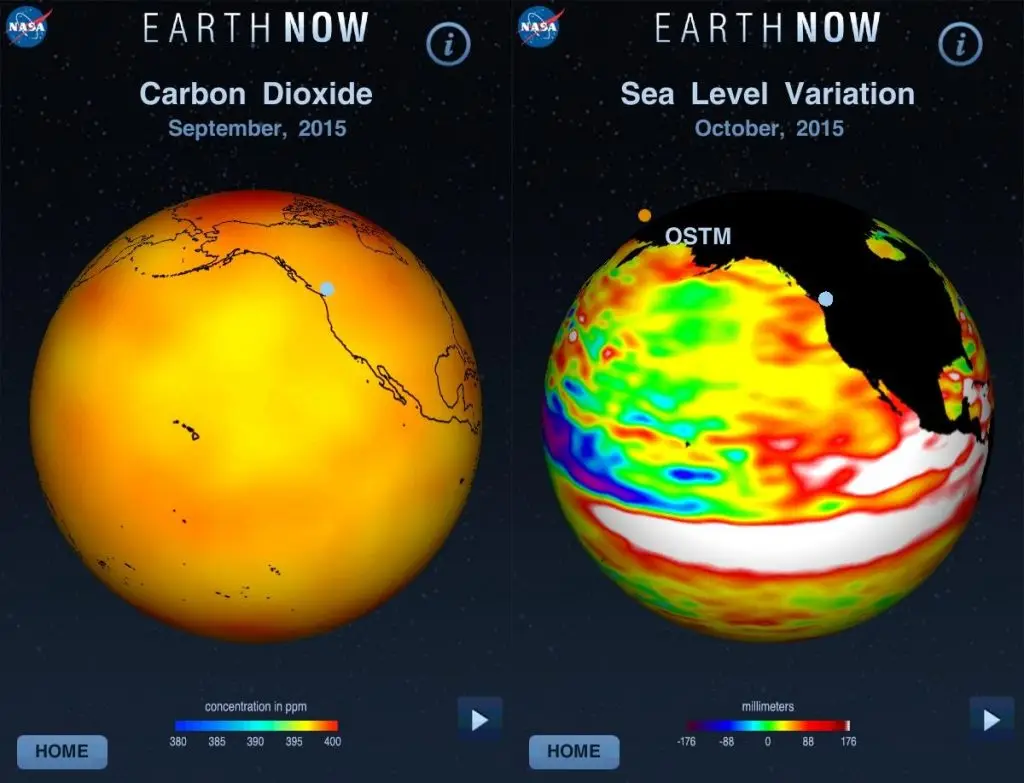
It is going to be a bumpy ride. El Nino’s back and is enhanced by increased global temperatures and atmospheric water vapor. It will be warmer in the northwest and wetter in the southwest, with more energetic storms. These two satellite composite views of our planet show CO2 levels (left) and sea levels (right). Water expands when it is warmer and contracts when cooler, so we can see where the heat is in the ocean by observing its height relative to the satellite that is measuring it.
As we continue to pour carbon into our air, the effects of natural cycles like El Nino, and the much longer Pacific Decadal Oscillation (PDO), are magnified by the additional energy that is in our oceans and atmosphere due to increased temperatures.
Now is the time to decrease energy use through efficiency, and to stop burning all fossil fuels through electrification of all things. Well, many things, anyway. Our hydroelectric resource is a great foundation for a renewable electric future, but hydro needs snowpack and for that we need to stop planet warming.
The use of solar energy is one of the many tools at our disposal in the effort to halt carbon emissions, but as its use increases there will be more work ahead to integrate this intermittent resource with our electric grid.
If you are interested in preparing for power outages, there are solutions that include the use of your large solar panel array to provide back-up power. Solar can be a central part of a plan for resilience.


